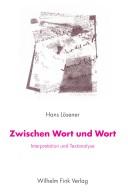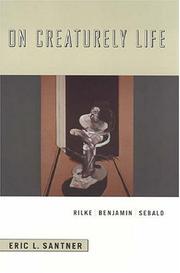| Listing 1 - 10 of 10 |
Sort by
|
Book
ISBN: 2020867974 9782020867979 Year: 2006 Volume: 1467 Publisher: Paris: Éditions du Seuil,
Abstract | Keywords | Export | Availability | Bookmark
 Loading...
Loading...Choose an application
- Reference Manager
- EndNote
- RefWorks (Direct export to RefWorks)
Book
ISBN: 3746623022 9783746623023 Year: 2006 Publisher: Berlin : Aufbau Taschenbuch Verlag,
Abstract | Keywords | Export | Availability | Bookmark
 Loading...
Loading...Choose an application
- Reference Manager
- EndNote
- RefWorks (Direct export to RefWorks)
Book
ISBN: 9783518457900 351845790X Year: 2006 Publisher: Frankfurt am Main : Suhrkamp,
Abstract | Keywords | Export | Availability | Bookmark
 Loading...
Loading...Choose an application
- Reference Manager
- EndNote
- RefWorks (Direct export to RefWorks)
Book
Abstract | Keywords | Export | Availability | Bookmark
 Loading...
Loading...Choose an application
- Reference Manager
- EndNote
- RefWorks (Direct export to RefWorks)
Book
ISBN: 2854900945 Year: 2006 Publisher: Paris Arfuyen
Abstract | Keywords | Export | Availability | Bookmark
 Loading...
Loading...Choose an application
- Reference Manager
- EndNote
- RefWorks (Direct export to RefWorks)
Book
ISBN: 9783458173311 3458173315 Year: 2006 Publisher: Frankfurt am Main : Insel,
Abstract | Keywords | Export | Availability | Bookmark
 Loading...
Loading...Choose an application
- Reference Manager
- EndNote
- RefWorks (Direct export to RefWorks)
Book
ISBN: 2845900945 9782845900943 Year: 2006 Volume: 16 Publisher: Paris: Arfuyen,
Abstract | Keywords | Export | Availability | Bookmark
 Loading...
Loading...Choose an application
- Reference Manager
- EndNote
- RefWorks (Direct export to RefWorks)
Les éditions Arfuyen se sont attachées depuis de longues années à faire apparaître la place centrale au sein de l’œuvre de Rilke de sa relation avec le christianisme. Relation constante, fécondante, depuis les écrits de jeunesse (Le Livre de la Vie monastique, Le Livre de la Pauvreté et de la Mort) jusqu’aux textes de maturité, mais aussi relation de répulsion et de révolte. Une série de livres publiés en édition bilingues par Arfuyen témoigne de ce dialogue complexe et passionnant à travers cette figure et cette oeuvre exemplaire : l’Amour de Madeleine, La Vie de Marie, Le Livre de la Pauvreté et de la Mort, Le Vent du Retour. Le présent ouvrage s’inscrit dans le droit fil de cette recherche. Il en livre des documents essentiels et inédits, qui modifient profondément la compréhension de l’entreprise rilkéenne. Il éclaire en particulier le rôle essentiel de Verhaeren dans la maturation de Rilke et révèle pleinement la force de la Lettre du jeune travailleur, texte majeur et méconnu de Rilke, ici traduit pour la première fois dans sa véritable signification de mémorial d’une longue et fervente admiration pour celui qui en est désigné comme le destinataire posthume : « Monsieur V. », Verhaeren. Rilke rencontre Verhaeren pour la première fois en novembre 1905, à Saint-Cloud, alors qu’il est encore pour quelques mois le secrétaire de Rodin à Meudon. Rilke, encore presque inconnu, approche la trentaine. Verhaeren, âgé de 50 ans, est au faîte de son œuvre et jouit d’un immense prestige dans l’Europe entière. Dès la première rencontre, Rilke se sent « de bonnes affinités silencieuses » avec Verhaeren. Les années ne feront que renforcer ce premier sentiment, et hisseront le poète belge à la hauteur d’un « merveilleux et puissant ami ». A Stefan Zweig, qui écrit un livre sur Verhaeren, Rilke déclare en 1907 : « On n’exagère jamais lorsque, pour parler de Verhaeren, on reporte tel quel sur son œuvre tout l’amour qu’on éprouve pour son être. » Si Verhaeren, par sa nature, arrive à forcer la porte de l’univers, il n’en est pas de même pour Rilke qui doit attendre patiemment, douloureusement, qu’elle s’ouvre à lui. « Chemin lent et solitaire », comme il l’écrit dans l’une des lettres au poète belge, rédigées en français. Lorsque Verhaeren meurt le 27 novembre 1916 en gare de Rouen, les jambes broyées, Rilke écrit : « C’était l’ami qui avait et me communiquait la plus grande force. » Six ans plus tard, alors qu’il écrit les Elégies de Duino, Rilke s’interrompt pour rédiger La Lettre du jeune travailleur, adressée à un poète, « Monsieur V. ». Texte unique, enflammé, qui se conclut par cet hommage vibrant : « Mon ami me dit un jour : ‘‘Donnez-nous des maîtres qui célèbrent l’Ici-Bas’’. Vous êtes un tel maître. »
Briefwisseling --- Correspondance --- Rilke, Rainer Maria --- Verhaeren, Emile --- Authors, German --- Authors, Belgian --- Correspondence --- Rilke, Rainer Maria, --- Verhaeren, Émile, --- 846 --- Literature French letters --- Authors, German - 20th century - Correspondence --- Authors, Belgian - 20th century - Correspondence --- Rilke, Rainer Maria, - 1875-1926 - Correspondence --- Verhaeren, Émile, - 1855-1916 - Correspondence --- Rilke, Rainer Maria, - 1875-1926 --- Verhaeren, Émile, - 1855-1916
Book
ISBN: 2221099680 Year: 2006 Publisher: Paris Laffont
Abstract | Keywords | Export | Availability | Bookmark
 Loading...
Loading...Choose an application
- Reference Manager
- EndNote
- RefWorks (Direct export to RefWorks)
Thematology --- Tsvetayeva, Marina --- Wilde, Oscar --- Rilke, Rainer Maria --- Thematologie --- Tsvetajeva, Marina --- Absolu --- Cvetaeva, Marina Ivanovna --- Métaphysique. --- Absolute, The, in literature --- Aesthetics in literature --- European literature --- History and criticism. --- Wilde, Oscar, --- Rilke, Rainer Maria, --- T︠S︡vetaeva, Marina,

ISBN: 9783770542352 3770542355 Year: 2006 Publisher: München: Fink,
Abstract | Keywords | Export | Availability | Bookmark
 Loading...
Loading...Choose an application
- Reference Manager
- EndNote
- RefWorks (Direct export to RefWorks)
Von der auslegenden Interpretation zur Entdeckung der Sinnaktivität des Textes Viele literaturwissenschaftliche und didaktische Modelle gehen davon aus, dass der Sinn ein Interpretationseffekt und keine Texteigenschaft sei. Die Folge dieser Annahme ist jene "Krise der Interpretation", die in der modernen Literaturtheorie häufig zu einer grundsätzlichen Ablehnung jeglicher Interpretationsmethodik geführt hat. Denn wenn der Sinn dem Text nur zugewiesen, nicht aber entnommen werden kann, dann kann es keine methodische Kontrolle des Textverstehens geben. In dem vorliegenden Buch wird ein Modell für die Textanalyse entwickelt, das weder von der Sinnzuweisung noch von der Sinnentnahme ausgeht, sondern nach der Sinnaktivität des Textes fragt. Damit tritt an die Stelle der Form-Inhalt-Interpretation ("Was sagt der Text?") die Beschreibung der semantischen Performativität des jeweiligen Textsystems.
German literature --- Explication --- Kafka, Franz, --- Schiller, Friedrich, --- Rilke, Rainer Maria, --- Criticism, Textual --- German literature - Explication --- Kafka, Franz, - 1883-1924 - Landzarzt - Criticism, Textual --- Schiller, Friedrich, - 1759-1805. - Kabale und Liebe --- Rilke, Rainer Maria, - 1875-1926 - Herbsttag - Criticism, Textual --- KAFKA (FRANZ), 1883-1924 --- SCHILLER (FRIEDRICH), 1759-1805 --- RILKE (RAINER MARIA), 1875-1926 --- LITTERATURE ALLEMANDE --- CRITIQUE ET INTERPRETATION --- COMMENTAIRE DE TEXTE --- Kafka, Franz, - 1883-1924 - Landzarzt --- Rilke, Rainer Maria, - 1875-1926 - Herbsttag

ISBN: 0226735036 0226735028 9786612738494 0226735052 1282738496 9780226735054 9781282738492 6612738499 9780226735023 9780226735030 Year: 2006 Publisher: Chicago : University of Chicago Press,
Abstract | Keywords | Export | Availability | Bookmark
 Loading...
Loading...Choose an application
- Reference Manager
- EndNote
- RefWorks (Direct export to RefWorks)
In his Duino Elegies, Rainer Maria Rilke suggests that animals enjoy direct access to a realm of being-the open-concealed from humans by the workings of consciousness and self-consciousness. In his own reading of Rilke, Martin Heidegger reclaims the open as the proper domain of human existence but suggests that human life remains haunted by vestiges of an animal-like relation to its surroundings. Walter Benjamin, in turn, was to show that such vestiges-what Eric Santner calls the creaturely-have a biopolitical aspect: they are linked to the processes that inscribe life in the realm of power and authority. Santner traces this theme of creaturely life from its poetic and philosophical beginnings in the first half of the twentieth century to the writings of the enigmatic German novelist W. G. Sebald. Sebald's entire oeuvre, Santner argues, can be seen as an archive of creaturely life. For Sebald, the work on such an archive was inseparable from his understanding of what it means to engage ethically with another person's history and pain, an engagement that transforms us from indifferent individuals into neighbors. An indispensable book for students of Sebald, On Creaturely Life is also a significant contribution to critical theory.
Melancholy in literature. --- Psychoanalysis and literature. --- Benjamin, Walter, --- Rilke, Rainer Maria, --- Sebald, Winfried Georg, --- Influence. --- Criticism and interpretation. --- Melancholy in literature --- Psychoanalysis and literature --- Literature and psychoanalysis --- Psychoanalytic literary criticism --- Literature --- זבאלד, וו. --- Sebald, Max, --- Rilke, René Maria Cäsar, --- Li-erh-kʻo, --- Rielke, Rainer Maria, --- Rilkʻe, Rainŏ Maria, --- Rilḳeh, Rainer Mariyah, --- Rilke, Reiner Marie, --- רילקה, ראינר מריה, --- רילקה, ריינר מריה --- רילקה, ריינר מריה, --- רילקה, רינר מריה --- רילקה, רינר מריה, --- רילקה, רץ מ. --- רילקה, ר.מ --- Benjamin, W. --- Benjamin, Walter --- Sebald, W. G. --- Holz, Detlef, --- Banyaming, --- Benʼyamin, Varutā, --- Peñcamin̲, Vālṭṭar, --- Binyamin, Ṿalṭer, --- בנימין, ולטר --- בנימין, ולטר, --- ולטר, בנימין, --- Penyamin, Palt'ŏ, --- 벤야민 발터, --- リルケ, ライナー マリア --- Rilke, Rainer Maria --- consciousness, self, close reading, analysis, analytical, critical, critique, existence, human, life, relationships, biopolitics, biopolitical, power, authority, poetic, philosophical, theory, theoretical, sebald, rilke, benjamin, literary, literature, philosophy, academic, scholarly, research, ethics, neighbors, communal, community, interpersonal.
| Listing 1 - 10 of 10 |
Sort by
|

 Search
Search Feedback
Feedback About UniCat
About UniCat  Help
Help News
News